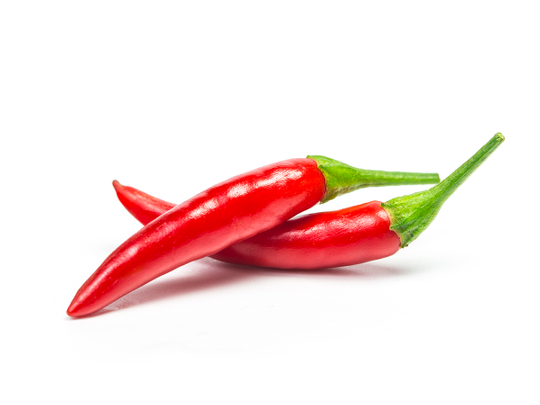
My love of chillies took a while to present itself as my childhood was of the typical Irish variety.
My mother wasn’t much of a fan of the spicy little fruit, which I guess comes from her Irish roots — roots being the operative word, as the diet my mum grew up with consisted mostly of potatoes, carrots and meat, the kind of meat and two-veg blandness that comes with life in a cold climate country. So my childhood meals consisted mostly of stew and every kind of potato-based dish you could think of.
There were some adventurous dishes. A bit of spaghetti Bolognese here and a bit of lasagne there. My earliest memories of chilli con carne were of a gelatinous mash of mince and sauce, baked beans instead of kidney beans dolloped over sticky, overcooked rice all flavoured with a packet of mysterious powder that claimed to be ‘Chilli Con Carne’ spices. There was little actual spice that I could decipher, let alone taste.
Much later, and I have my sister to thank for this, did I discover the beauty of the real flavour of chilli and the endless possibilities. It wasn’t until I was in my 20s that my taste buds developed the glorious relationship that I enjoy with spice and chillies today, an appreciation that has evolved into healthy respect.
There was a time when my chilli penchant had taken on concerning attributes. Foods that didn’t contain spice began to lack flavour for me and I started thinking of ways to incorporate little red and green flakes into every meal.
I was throwing chillies into my omelettes and spicing up bacon sandwiches with hot sauce instead of the suitably spiced staple, brown.
Some believe that chillies could be addictive, something I never thought possible until I started carrying hot sauce with me to restaurants.
These days there is a fetishism about chillies, with all sorts of strange and severe sounding variations that have been developed by growers with names such as Brain Strain, Ghost and Carolina Reaper. They do not sound like something I’d like to throw into my omelette in the morning.
The heat that we feel when we eat chillies is measured using the Scoville heat scale and chillies such as the Carolina Reaper can reach into the millions. By comparison, the normal capsicum peppers that we use in our salads and cooking are zero on the scale so you can imagine the heat these colourful little fruits can create on your tongue.
Personally, I never understood the desire to experience such pain when eating. There is a not-so-subtle difference between enjoying the taste and sensation of chillies in a meal and putting your body, especially your mouth and stomach, into such riotous trauma. When it gets to the point where you can’t eat a meal without writhing in agony and sweating like a snowman in a steam room, then it’s time to rethink your devotion to the dinky fruit.
When I’m eating spicy food and it reaches a certain level of hotness, I can tell when I’ve hit my limit because I begin to hiccup; great big hiccups that last as long as the heat lingers, much to the amusement of those around me. But at least I know I have a cut-off point, and there’s no danger of me ordering too spicy a meal when dining out. Don’t get me wrong, my tolerance levels are quite high, in my opinion, but my body reacts when I go overboard.
It doesn’t stop me from devouring my favourite curry though, and I’ve learned to control my habit and to enjoy the tastes of other dishes that don’t include chilli.
Some believe that chillies could be addictive, something I never thought possible until I started carrying hot sauce with me to restaurants. Thankfully, these days it stays in the cupboard where it belongs, most of the time.
— Christina Curran is freelance writer based in Northern Ireland.








